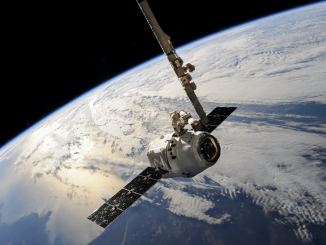 The militarization of outer space is not a new phenomenon, it can be traced back to the Cold War era when Russia launched Sputnik 1 as the world’s first military satellite in outer space. The US didn’t take long to respond and launched Explorer I. These developments triggered political, military, technological and scientific developments with few arms control initiatives in outer space. However, later in Operation Iraqi Freedom (OIF), space capabilities proved to be a force multiplier on many instances, triggering a never-ending and expensive arms race in outer space. Recently, there has been evident rapid transformation in the space programs of many space-faring nations. The militaries of many countries are using space for military communication, intelligence, imaging, targeting and so on. Mostly countries claim that their space programs are for socio-economic development, however, recent trends make it obvious that states are overtly militarizing outer space.
The militarization of outer space is not a new phenomenon, it can be traced back to the Cold War era when Russia launched Sputnik 1 as the world’s first military satellite in outer space. The US didn’t take long to respond and launched Explorer I. These developments triggered political, military, technological and scientific developments with few arms control initiatives in outer space. However, later in Operation Iraqi Freedom (OIF), space capabilities proved to be a force multiplier on many instances, triggering a never-ending and expensive arms race in outer space. Recently, there has been evident rapid transformation in the space programs of many space-faring nations. The militaries of many countries are using space for military communication, intelligence, imaging, targeting and so on. Mostly countries claim that their space programs are for socio-economic development, however, recent trends make it obvious that states are overtly militarizing outer space.
Taking into consideration the developments of 2019, it becomes obvious that an arms race in outer space in no more a utopian thought. In March 2019, India conducted an anti-satellite (ASAT) test generating space debris and fuelling arms race in outer space at a regional and international level. Additionally, India launched military satellites including EMISAT, RISAT-2B, CARTOSAT-, RISAT-2BR-1. As of yet, there are sixteen to nineteen dedicated Indian military satellites in outer space. These military satellites are for Command, Control, Communications, Computer, Intelligence, Information, Surveillance, and Reconnaissance (C4I2SR) capabilities. The Indian Space and Research Organization (ISRO) is fully involved in dual projects as it is evident from its close cooperation with India’s Defence Research and Development Organization (DRDO) and the Defence Research and Development Service (DRDS). Both these organizations are known for their expertise in missile development. Following the trend, the French government has also stated that they will also develop ASAT capability.
In December 2019, the North Atlantic Treaty Organization (NATO) called space as “an operational domain” signalling investments in outer space war-fighting capabilities. NATO Secretary General, Jens Stoltenberg has previously stated that the North Atlantic Alliance has recognized the cosmos as a new operational sphere, meaning that all space assets will be available to the Alliance, both in peacetime and in times of war. “Space is part of our daily life here on Earth. It can be used for peaceful purposes. But it can also be used aggressively.”
Moving further, despite blaming Russia and China for militarizing and weaponizing outer space, the US government established a Space Force. On 20th Dec 2019, President Trump signed the 2020 National Defence Authorization Act (NDAA). It directed the establishment of the US Space Force (USSF) as the sixth branch of the armed forces. NDAA states that the Space Force will fall within the US Air Force (USAF), but after one year it will have its own representation on the Joint Chiefs of Staff. The impetus behind the move is to “deter aggression and defend the US, its allies and interests from any hostile acts in and from space.” According to POTUS it is the need of an hour to have “dominance” and “multi domain war-fighting capability” in outer space. A 2018 Department of Defence report stresses building offensive capabilities to “degrade, deny, disrupt, destroy and manipulate adversary capabilities.” Although the creation of the Space Force seems like President Trump’s idea to gain attention as a face-saving strategy, however, the origin goes back to the US Space Command’s 1997 Vision for 2020. The document calls for maintaining military superiority in land, air, sea and space.
The Space Force will develop forces for: space situational awareness; satellite operations and global, integrated, command and control of military space forces; global and theatre military operations to enable joint campaigns (to include missile warning); space support to land, air, naval and cyber forces; space-lift and space range operations; space based nuclear detonation detection; and prompt and sustained offensive and defensive space operations to achieve space superiority. The creation of the Space Force will however have a number of political, environmental and ethical repercussions.
Recently, Russia accused the US of weaponizing space, which is irreversible and will have implications for outer space security. In view of these developments over a very small period of time, it is obvious that countries will be militarizing and weaponizing outer space, regardless of the consequences. The present international legal system to deal with these threats is not enforceable or adequate. The United Nations Committee on the Peaceful Uses of Outer Space (COPOUS), has developed five core space law treaties including: Outer Space Treaty (OST), Rescue Agreement, Liability Convention, Registration Convention, and Moon Agreement. The OST known as “Magna Carta of Space”, remains the cornerstone of international space law, with four other offshoots.
As per Article I of the Treaty, the nations have the freedom to explore outer space for peaceful use. However, the treaty has not defined the term “peaceful” which leaves enough room for interpretation, what is meant by “peaceful”. Likewise, it has not explicitly prohibited and defined “militarization of space” other than prohibition of weapons of mass destruction.
Article IV of the Treaty prohibits the deployment of nuclear weapons or weapons of mass destruction in orbit or elsewhere in outer space; it also advises, “not to create military bases, test of any kind of weapon or to conduct military manoeuvres, especially on the Moon and celestial bodies.” The restriction, however, does not ban all military activities in space such as military space force or the weaponization of space. It does not prohibit the use of “any equipment or facility”, including the employment of military personnel for scientific or “other peaceful means”. This again leaves enough room for violations. This is one of the main reasons the former Soviet Union and the US were able to pursue military programs in space in one form or the other.
Initiatives such as International Code of Conduct (ICoC), Prohibition on Placement of Weapons in Outer Space, the Threat or Use of Force against Outer Space Objects (PPWT), and Prevention of Arms Race in Outer Space (PAROS), validate that the international community is well aware of the fact that existing legal arrangements are inadequate for halting the imminent weaponization of space. There is not even a single agreement between states on dealing with space debris, which is an environmental concern. Now, with ever increasing actors, including private companies and individuals, it will become more challenging to deal with the debris issue.
Outer space is a global common and belongs to everyone and to no one, and no country can lay claim to it. The absence of an effective legal arrangement against space militarization leading to weaponization, opens a window for states to exploit these legal gaps for their own geopolitical, geo-economic and geostrategic interests. This sets a precedent for other states to follow suit. Therefore, the weaponization of outer space and the space arms race have the potential to trigger lethal repercussions for international peace and stability. In order to ensure space security, there is a dire need to have universal and effective arms control arrangements for outer space.



Be the first to comment